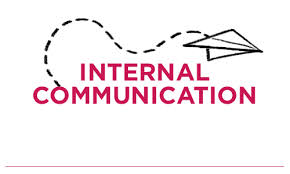Embedding the Compliance Message in Middle Management
 Chief compliance officers and senior executives wrestle with strategies to spread and embed important compliance messages. A CEO and senior executives can spread a compliance message but they are always battling competing priorities in the overall direction and operation of the company. Nonetheless, we all have seen senior managers who are dedicated to promoting a compliance program, particularly in these days of aggressive enforcement.
Chief compliance officers and senior executives wrestle with strategies to spread and embed important compliance messages. A CEO and senior executives can spread a compliance message but they are always battling competing priorities in the overall direction and operation of the company. Nonetheless, we all have seen senior managers who are dedicated to promoting a compliance program, particularly in these days of aggressive enforcement.
CCOs have to be realistic and have to develop their own “ground” game (I know a political term in this political season). The best way to bring the compliance message out and embed it in a company is to work with middle managers to spread the compliance message. A CCO would be well advised to spend time on this important issue.
First, the CCO has to develop a target list of middle managers keyed to risk areas. For example, a manager of a sales force in Asia or China specifically is a prime target for enlisting in the compliance program messaging effort. The targeted middle managers should reflect key areas of risk such as sales/marketing, business development, procurement, vendor onboarding, and invoice review, approval and payment.
Second, the CCO and middle managers have to work together to develop a messaging approach. Middle managers have regular staff meetings, and these meetings are a prime opportunity to reinforce the compliance message. Working with the middle manager, the CCO can develop a format for delivery and recruit the manager to develop relevant content.
A manager can work with the CCO to cite specific examples of issues that have come up, and/or describe hypotheticals and encourage discussion of the compliance issue raised by the hypothetical. These discussions are often informal and encourage reaction and comment from staff. It is a very effective training and communications tool.
Staff meetings in the field are also an important opportunity for managers to communicate his or her own commitment to compliance as an important part of the manager’s overall priorities. When a sales manager speaks about compliance, and the importance of compliance, staff members are more likely to embrace the message than a canned statement from a CCO.
To enable these compliance communications strategies, a CCO has to develop a compliance package of tools that a manager can use. Some of these items can be given to all middle managers but the important materials are those for specific audiences and risks. A compliance tool kit for middle managers can be an invaluable resource.
Another important part of this process is for the CCO to conduct training of managers on strategies and practical advice on how to communicate the compliance message. Training sessions of middle managers who share similar concerns about promoting compliance while supervising business activities have to be done carefully, with full support of the manager and appropriate consideration of the manager’s competing priorities.
 Companies that include an evaluation component for ethics and compliance for its managers should build on this incentive for managers. It is important to leverage this incentive to develop a strong working relationship and commitment to support middle managers in spreading the compliance message.
Companies that include an evaluation component for ethics and compliance for its managers should build on this incentive for managers. It is important to leverage this incentive to develop a strong working relationship and commitment to support middle managers in spreading the compliance message.
CCOs who have made this effort have been pleasantly surprised on how receptive managers have been in taking on this new role. Managers want to succeed and move up in the company. If compliance is made a part of this promotion track, CCOs will be able to develop an effective manager communications and training program.
















1 Response
[…] Read Full Article: Embedding the Compliance Message in Middle Management – Corruption, Crime & Compliance […]